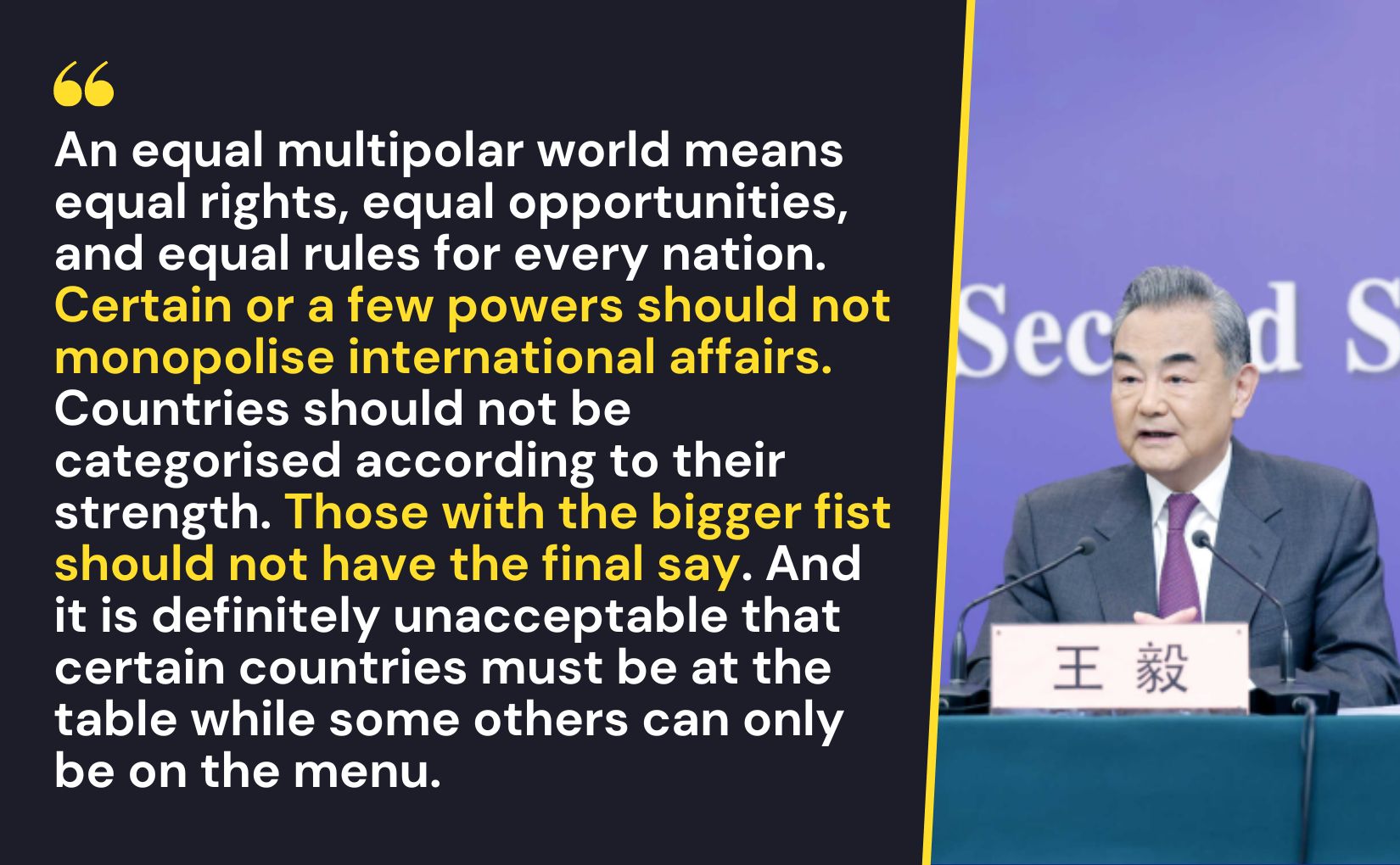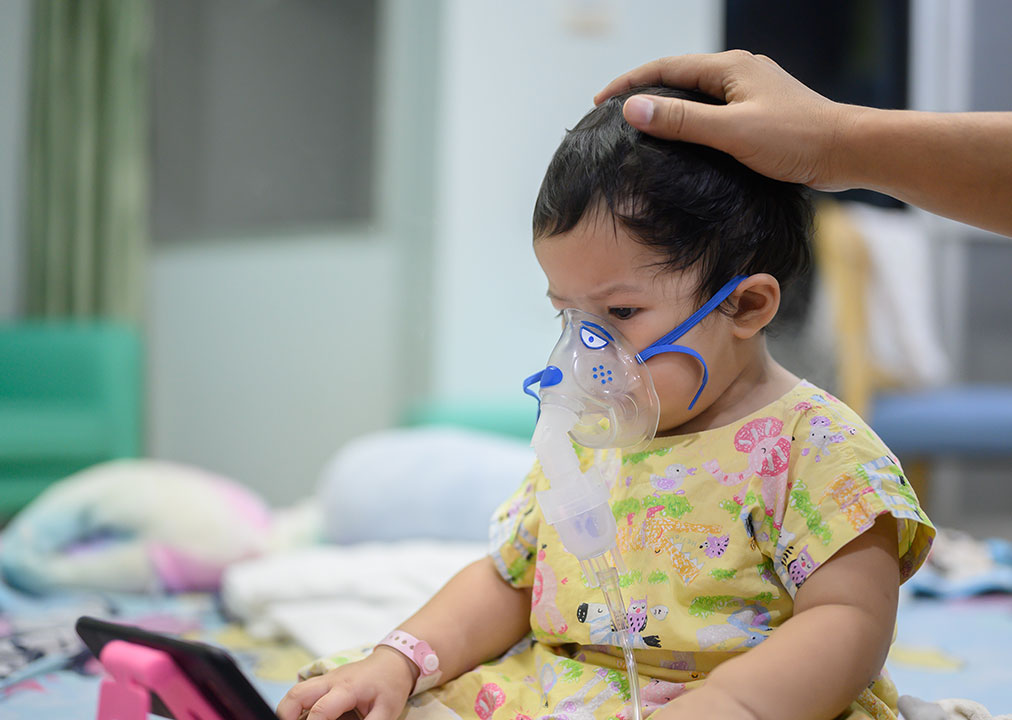CIIE to set up dedicated zone for least developed countries as 100-day countdown begins – Global Times

Report on the 8th China International Import Expo and its Alignment with Sustainable Development Goals
Introduction and Event Overview
Preparations are underway for the eighth China International Import Expo (CIIE), scheduled to be held in Shanghai from November 5 to 10. The event is positioned as a platform for advancing open cooperation and providing global partners with significant market opportunities, with a notable emphasis on initiatives that align with the United Nations Sustainable Development Goals (SDGs).
- Event: 8th China International Import Expo (CIIE)
- Location: Shanghai
- Dates: November 5-10
- Exhibition Space: Over 330,000 square meters
- Confirmed Participants: Over 50 countries and international organizations
Advancing SDG 10 (Reduced Inequalities) and SDG 1 (No Poverty)
A central focus of the 8th CIIE is the implementation of measures designed to reduce economic disparities between nations and support poverty alleviation efforts. These initiatives directly contribute to SDG 10 (Reduced Inequalities) and SDG 1 (No Poverty) by providing preferential market access to developing economies.
- Dedicated Zone for Least-Developed Countries (LDCs): For the first time, the CIIE will establish a dedicated exhibition zone for products from LDCs. This provides a targeted platform to assist these nations in entering the Chinese market.
- Expansion of the African Product Zone: The expo will further expand and upgrade the zone for African products, supporting the 53 African countries that have diplomatic relations with China.
- Leveraging Zero-Tariff Policies: These specialized zones are designed to help LDCs and African nations fully utilize China’s policy of granting zero-tariff treatment on 100 percent of their products. This policy aims to translate preferential trade terms into tangible economic opportunities, fostering income generation and contributing to poverty reduction.
Fostering SDG 8 (Decent Work and Economic Growth)
The CIIE serves as a catalyst for promoting sustained, inclusive, and sustainable economic growth for its participants, particularly those from developing regions. By facilitating access to one of the world’s largest consumer markets, the expo directly supports the objectives of SDG 8.
- The platform enables companies from LDCs and African nations to showcase their products, engage in commercial exchanges, and integrate more deeply into global value chains.
- This enhanced participation in global economic collaboration is intended to stimulate domestic production and create decent work opportunities in participating countries.
- By offering a structured platform for trade, the CIIE contributes to the development of a more equitable and inclusive global economic framework, fostering shared prosperity.
Strengthening SDG 17 (Partnerships for the Goals)
The expo functions as a significant instrument for strengthening global partnerships for sustainable development, a core tenet of SDG 17. It promotes a universal, open, and non-discriminatory multilateral trading system through international cooperation.
- High-Level Participation: Sweden and the United Arab Emirates will serve as guest countries of honor, while Kyrgyzstan will make its debut at the country exhibition.
- Broad International Representation: 60 overseas exhibition groups from 40 countries and regions have confirmed their attendance, reflecting a robust global partnership model.
- Record Participation: The number of participating companies from Canada, Malaysia, New Zealand, Norway, and Peru is set to reach a record high, underscoring the event’s role as a vital hub for international trade and cooperation.
Corporate Engagement and Market Confidence
The continued and expanding participation of multinational corporations highlights strong confidence in the platform and the Chinese market as a driver of global growth.
- Sustained Commitment: 170 companies and 27 institutions have confirmed their participation for eight consecutive sessions.
- Corporate Endorsements:
- German multinational Henkel is expanding its presence, viewing the CIIE as a critical venue for showcasing innovation and reinforcing its long-term investment commitment.
- German life sciences company Bayer will attend for its eighth time, recognizing the expo as a key platform for promoting high-level opening-up, investment, and growth opportunities.
1. Which SDGs are addressed or connected to the issues highlighted in the article?
-
SDG 8: Decent Work and Economic Growth
The article highlights initiatives aimed at fostering economic growth, particularly for developing nations. By providing a platform like the China International Import Expo (CIIE) and implementing zero-tariff policies, China is creating opportunities for Least Developed Countries (LDCs) and African nations to access the Chinese market, thereby supporting their economic development.
-
SDG 10: Reduced Inequalities
The article directly addresses the goal of reducing inequalities by focusing on preferential treatment for LDCs and African countries. The creation of a “dedicated zone for products from the least-developed countries” and the implementation of “zero-tariff treatment” are specific measures designed to create a “more equitable, inclusive, and beneficial global economic framework,” thus reducing economic disparities between nations.
-
SDG 17: Partnerships for the Goals
The entire CIIE event is a manifestation of global partnership. The article emphasizes “open cooperation” and the participation of “over 50 countries and international organizations.” It describes the expo as a platform for “global partners” to engage in “exchanges and cooperation,” which strengthens the global partnership for sustainable development by promoting a universal, rules-based, and non-discriminatory trading system.
2. What specific targets under those SDGs can be identified based on the article’s content?
-
SDG 8: Decent Work and Economic Growth
- Target 8.a: Increase Aid for Trade support for developing countries, in particular least developed countries.
- Explanation: The article describes the CIIE as a platform that provides “valuable opportunities for all global partners.” Specifically, the creation of a “dedicated zone for products from the least-developed countries” and the expansion of the “African product zone” are forms of non-financial aid for trade. These initiatives are designed to “assist the least-developed countries and the 53 African countries” in exploring the Chinese market, which directly aligns with increasing Aid for Trade support.
-
SDG 10: Reduced Inequalities
- Target 10.a: Implement the principle of special and differential treatment for developing countries, in particular least developed countries, in accordance with World Trade Organization agreements.
- Explanation: The article provides a clear example of this target’s implementation. It states that “China has granted zero-tariff treatment to all the least developed countries with which it has diplomatic relations… on 100 percent of their products.” This policy is a direct application of special and differential treatment aimed at helping LDCs benefit from international trade.
-
SDG 17: Partnerships for the Goals
- Target 17.11: Significantly increase the exports of developing countries, in particular with a view to doubling the least developed countries’ share of global exports.
- Explanation: The measures described in the article are aimed at achieving this target. The expo’s purpose is to “help their [LDCs and African countries] companies and products to explore the Chinese market,” and the zero-tariff policy is intended to “fully leverage the benefits” for these countries, thereby increasing their export potential to China and contributing to their overall share of global exports.
- Target 17.12: Realize timely implementation of duty-free and quota-free market access on a lasting basis for all least developed countries.
- Explanation: The article explicitly details China’s actions toward this target. The statement that “China has granted zero-tariff treatment to all the least developed countries with which it has diplomatic relations, on 100 percent of their products” is a direct implementation of duty-free market access for LDCs.
3. Are there any indicators mentioned or implied in the article that can be used to measure progress towards the identified targets?
-
SDG 10: Reduced Inequalities
- Indicator 10.a.1: Proportion of tariff lines applied to imports from least developed countries and developing countries with zero-tariff.
- Explanation: The article directly mentions the data for this indicator. It states that China provides zero-tariff treatment “on 100 percent of their products” for LDCs with which it has diplomatic relations. This provides a specific, measurable value for the proportion of tariff lines with zero tariff.
-
SDG 17: Partnerships for the Goals
- Indicator 17.11.1: Developing countries’ and least developed countries’ share of global exports.
- Explanation: While the article does not provide a specific percentage for this indicator, it implies its relevance. The entire initiative of the CIIE’s dedicated zones and zero-tariff policies is designed to increase the exports of LDCs and developing countries. The success of these measures would be directly measured by tracking this indicator over time.
- Indicator 17.12.1: Average tariffs faced by developing countries, least developed countries and small island developing States.
- Explanation: The article provides a direct data point for this indicator in the context of China’s trade policy. It states that China has granted “zero-tariff treatment” to LDCs, meaning the average tariff faced by these countries for their exports to China under this policy is zero.
4. Table of SDGs, Targets, and Indicators
| SDGs | Targets | Indicators |
|---|---|---|
| SDG 8: Decent Work and Economic Growth | 8.a: Increase Aid for Trade support for developing countries, in particular least developed countries. | Implied: The existence and expansion of dedicated expo zones for LDCs and African countries serve as a qualitative indicator of Aid for Trade support. |
| SDG 10: Reduced Inequalities | 10.a: Implement the principle of special and differential treatment for developing countries, in particular least developed countries. | 10.a.1: Proportion of tariff lines applied to imports from least developed countries and developing countries with zero-tariff. (Mentioned as “100 percent of their products” receiving zero-tariff treatment). |
| SDG 17: Partnerships for the Goals | 17.11: Significantly increase the exports of developing countries, in particular with a view to doubling the least developed countries’ share of global exports. | 17.11.1: Developing countries’ and least developed countries’ share of global exports. (Implied as the intended outcome of the CIIE and tariff policies). |
| 17.12: Realize timely implementation of duty-free and quota-free market access on a lasting basis for all least developed countries. | 17.12.1: Average tariffs faced by developing countries, least developed countries and small island developing States. (Mentioned as “zero-tariff treatment”). |
Source: globaltimes.cn

What is Your Reaction?
 Like
0
Like
0
 Dislike
0
Dislike
0
 Love
0
Love
0
 Funny
0
Funny
0
 Angry
0
Angry
0
 Sad
0
Sad
0
 Wow
0
Wow
0












































































